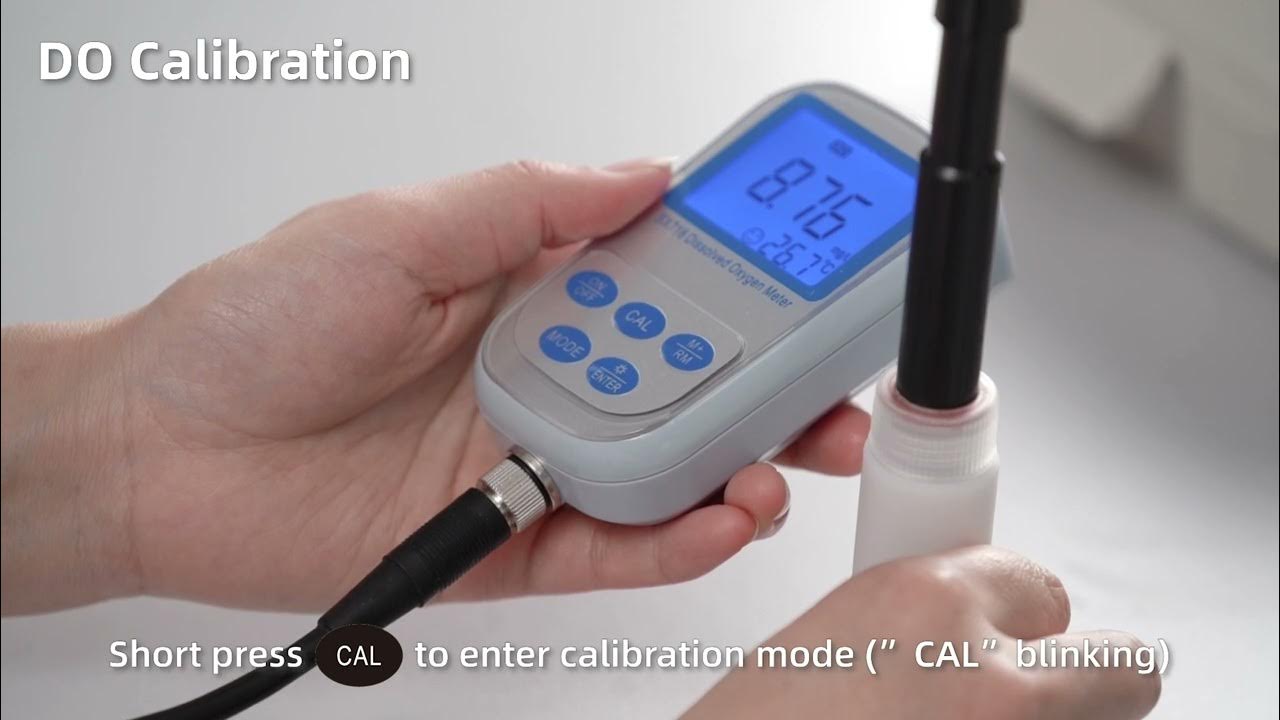Dissolved oxygen measurement
Summary
TLDRThis script delves into the critical role of dissolved oxygen measurement in various liquids for quality assurance. It introduces the amperometric method, pioneered by Leland C. Clark, using a Clark electrode to gauge oxygen levels in solutions, and discusses its maintenance challenges and improvements with reference electrodes. The optical method, relying on fluorescence quenching, offers fast, stable readings with minimal maintenance. Both techniques are vital for industries such as water treatment, food and beverage, and life sciences, ensuring process control and product quality.
Takeaways
- 💧 Liquids such as water, beverages, and chemicals are vital in daily life and their quality is determined by their chemical and physical properties.
- 🔍 To assess the quality of liquids, various measurement principles are employed, including the measurement of dissolved oxygen which is crucial for many applications.
- 🌱 Oxygen penetrates liquids through various means like plants, waves, and gas exchange with the atmosphere, and it distributes evenly in the water.
- 🔬 The amperometric and optical measurement principles are established for determining oxygen concentration in liquids.
- 🏥 In 1954, Leland C. Clark developed the Clark electrode for measuring oxygen concentration in blood, which is also applicable to various solutions.
- 🔋 An amperometric sensor consists of a gold cathode and a silver anode, with a DC voltage applied, and is separated from the medium by a porous membrane that allows oxygen to diffuse into the sensor.
- 🔌 The current generated by the reduction of oxygen at the cathode is proportional to the oxygen concentration and is displayed after processing by the transmitter.
- 📉 Over time, a silver bromide layer can form on the anode, potentially causing measurement errors, but this can be mitigated with sensors that have reference electrodes.
- 🌡️ The amperometric measuring principle is suitable for a wide range of oxygen pressures and concentrations, including trace levels.
- 🌌 The optical oxygen sensor operates on the principle of fluorescence quenching, using an LED and a photodiode to measure the attenuation of fluorescence light by oxygen molecules.
- 🛠️ Optical sensors with reference LEDs are used in high-temperature applications to ensure reliable results despite the aging of the measurement LED.
- 🔄 The optical method offers fast, stable measurements with low maintenance requirements, which is advantageous for industries such as water treatment, food and beverage, and life sciences.
Q & A
What are some examples of liquids that are essential in our daily life?
-Examples of essential liquids in daily life include water, beverages, dairy products, chemicals, acids and bases, and pharmaceutical products.
How is the quality of liquids determined?
-The quality of liquids is determined by their chemical and physical properties.
What is the significance of measuring dissolved oxygen in liquids?
-Measuring dissolved oxygen in liquids is significant for assessing their chemical and physical properties, which is crucial for quality assurance and process control.
How does oxygen penetrate liquids?
-Oxygen penetrates liquids through various means such as oxygen-producing plants, waves, or gas exchange with the atmosphere.
Who developed the Clark electrode and for what purpose?
-Leland C. Clark, an American biochemist, developed the Clark electrode in 1954 to measure the oxygen concentration in blood.
What are the main components of an amperometric sensor?
-An amperometric sensor mainly consists of a gold cathode (working electrode), a silver anode (counter electrode), a reaction chamber filled with an electrolyte, and a porous membrane that separates the chamber from the medium.
How does the amperometric oxygen measuring principle work?
-The amperometric oxygen measuring principle works by applying a DC voltage to the electrodes, allowing dissolved oxygen to diffuse through the membrane into the sensor, where it is reduced at the gold cathode, resulting in a current flow proportional to the oxygen concentration.
What issue can arise with the silver anode over time and how is it addressed?
-Over time, a silver bromide layer can form on the silver anode, reducing the effective voltage and potentially causing measurement error. This layer is regularly removed in applications with high temperatures, or reference electrodes are used to compensate for the increasing silver bromide layer.
What is the advantage of using a reference electrode in amperometric sensors?
-The reference electrode compensates for the increasing silver bromide layer via an internal regulating circuit, reducing maintenance requirements for the sensor and ensuring accurate measurements.
How does the optical oxygen sensor operate?
-The optical oxygen sensor operates using the fluorescence quenching principle. It contains an LED, a photodiode, and a separating section covered by an oxygen permeable layer with marker molecules. Oxygen molecules quench the fluorescence light emitted by the marker molecules, and the attenuated light is detected and processed to display the oxygen concentration.
Why are reference LEDs used in optical oxygen sensors for applications involving higher temperatures?
-Reference LEDs are used in optical oxygen sensors for applications involving higher temperatures to compensate for the aging of the measurement LED, ensuring reliable results even in demanding conditions.
In which industries is oxygen measurement essential for quality assurance and process control?
-Oxygen measurement is essential for quality assurance and process control in industries such as water and wastewater, food and beverage, life sciences, chemical, and power industry.
Outlines

此内容仅限付费用户访问。 请升级后访问。
立即升级Mindmap

此内容仅限付费用户访问。 请升级后访问。
立即升级Keywords

此内容仅限付费用户访问。 请升级后访问。
立即升级Highlights

此内容仅限付费用户访问。 请升级后访问。
立即升级Transcripts

此内容仅限付费用户访问。 请升级后访问。
立即升级5.0 / 5 (0 votes)






